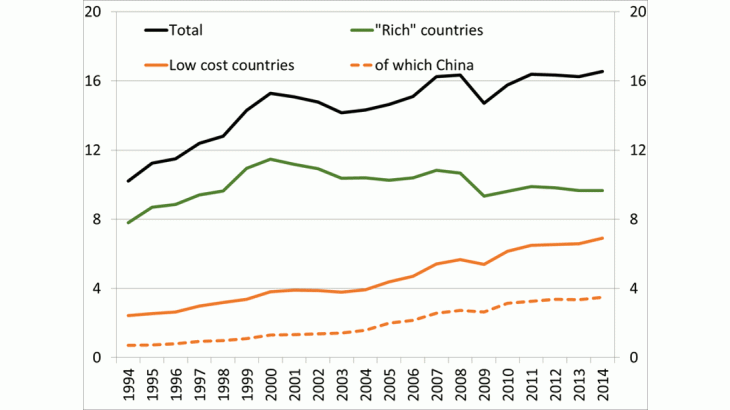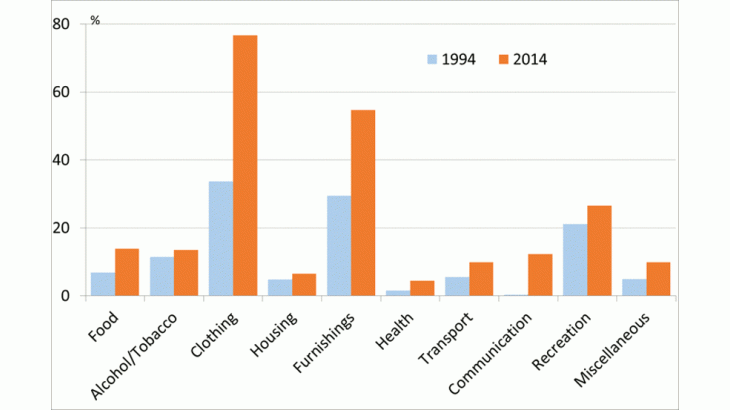Chart 3 represents the observed contribution of these two effects to imported inflation. The inflation differential effect is slightly positive over the period (+ 0.06pp), while the substitution effect is negative (-0.47pp). Even though prices of imported goods from low-wage countries record slightly faster growth than other import prices, their level remains significantly lower. Thus, when they replace other goods in imports, imported inflation falls. Ultimately, through this channel imported inflation dropped by -0.4 pp per year, and CPI inflation by -0.06 pp per year on average.
The response of French companies to this heightened competition
Faced with competitive pressures, French companies adapt their pricing strategy. Assuming the cost structure remains constant, they can cut their margins to lower their prices and preserve their market share. This channel poses measurement problems as it is difficult to identify domestic price changes triggered solely by the shock of competition from low-wage countries. For example, price changes may also stem from a rise in domestic demand, which not only generates import growth but also exerts upward pressure on prices charged by French firms. The price decrease attributable to competitive pressure may then be underestimated because the demand effect plays in the opposite direction. By correcting these problems to capture solely the price response to the import shock, a 1% rise in the share of low-wage countries in the French market leads to a decline of around 1 pp in PPI inflation, and hence a drop of 0.06 pp per year on CPI inflation.
Lower prices but an overall effect that is difficult to measure
In 2014, households’ consumption of goods and services amounted to around EUR 1,000 billion. Having access to cheaper goods enabled households to save about EUR 30 billion on consumption in 2014 compared to what they would have paid in the absence of international trade openness to low-wage countries. Taking into account the total number of households (slightly less than 30 million in 2014), consumption per household was therefore on average EUR 1,000 cheaper in 2014 compared to what it would have been in the absence of imports from low-wage countries since 1994.
These estimates are at the lower end of the range of the total direct effect on prices because they do not take into account the effects of imported intermediate goods incorporated into goods manufactured in France. The productivity gains associated with these inputs benefits French consumers (see Blaum et al., 2016).
These results are nevertheless to be interpreted with caution since the greater openness to international trade has also had indirect effects, in particular on wages (see Carluccio et al., 2016) and employment (see Malgouyres, 2018). These effects should be taken into account when assessing the impact on households’ purchasing power.


